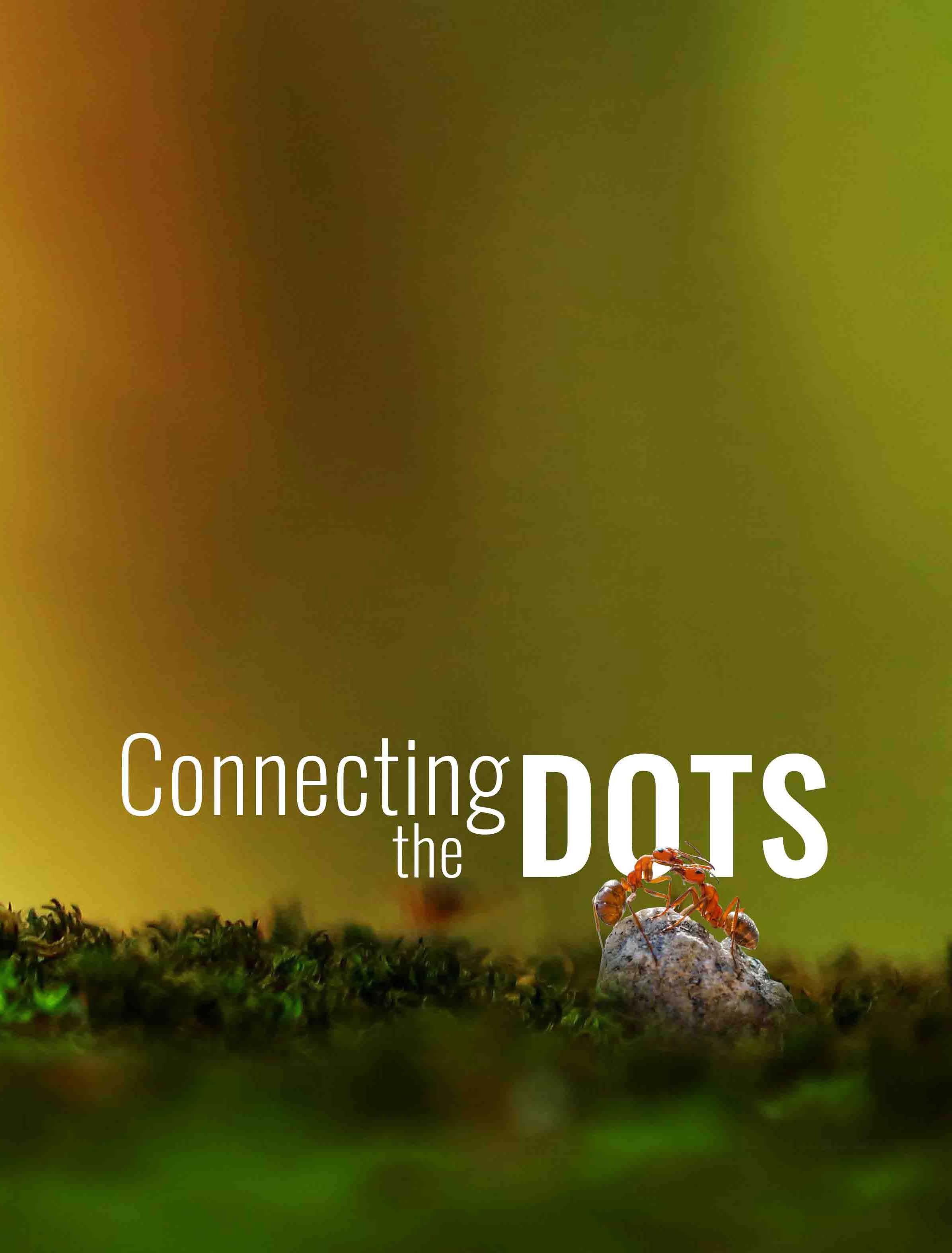

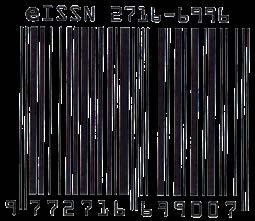

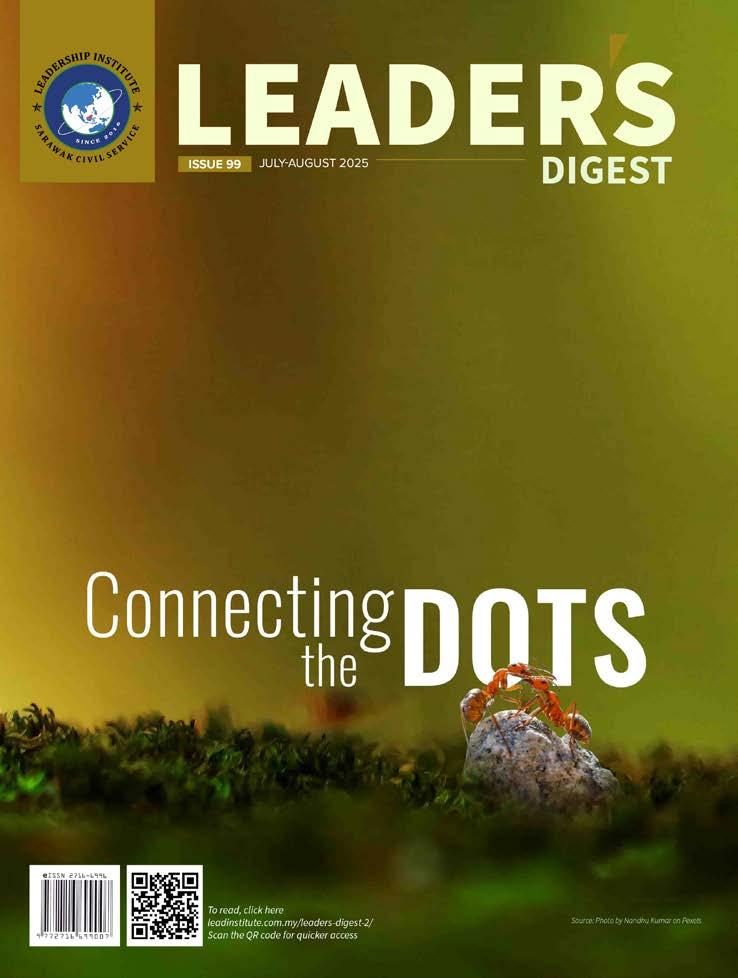






Editor-in-Chief
Datu
Editor
Graphic
Awang











The civil service plays a vital role in turning the aspirations and strategic plans of the nation’s top leadership into reality. As highlighted by the Prime Minister during the 2025 Public Service Day: “Every civil servant contributes in their own way to bringing about national transformation…” — a statement that underscores the indispensable role of civil servants in driving the country’s progress.
Sarawak, in its quest to become a developed and high-income state by 2030, is also committed to achieving social inclusivity and environmental sustainability. These goals are embedded in the Post-COVID-19 Development Strategy 2030 (PCDS 2030), which outlines seven strategic thrusts across six economic sectors. The success of this strategy depends heavily on the strong mandate from both state and federal leadership, as well as the political stability that stems from the close cooperation between Sarawak and the federal government.
This is where the civil service—at both levels—becomes critically important in ensuring that development agendas are harmonised and successfully implemented. It calls for a spirit of unity and cooperation, embodied in the (Together in Unity), a long-standing value shared

Such a spirit must be further cultivated and strengthened among leaders in the civil service, especially in conjunction with key national observances such as Sarawak Day on July 22 and National Day on August 31. Through close collaboration and mutual support, the alignment of roles and joint problem-solving will not only enhance coordination but also accelerate the realisation of our shared vision of building a dignified and resilient nation.
Datu Dr. Haji Azhar bin Haji Ahmad

“
With this understanding, I believe that the people of Sarawak are consistently motivated to strengthen this region as an area that has the ability to be on par with other places
The Right Honourable Datuk Patinggi Tan Sri (Dr) Abang Abdul Rahman Zohari bin Tun Datuk Abang Openg Premier of Sarawak
Sarawak Day Celebration 2024, Bintulu

The date July 22, 1963 is a historic date in which Sarawak was given the authority to govern itself after 17 years of being under British rule (1946-1963) following the Second World War, said Premier Datuk Patinggi Tan Sri Abang Johari Tun Openg.
He said despite this historic date, the people of Sarawak, especially the new generation, should understand the position of Sarawak when it merged with three other regions to form Malaysia in 1963.
“With this understanding, I believe that the people of Sarawak are consistently motivated to strengthen this region as an area that has the ability to be on par with other places,” he said at the Sarawak Day 2024 celebration in Bintulu last night.
According to him, Sarawak already had its own Constitution in 1941, following 100 years of being under the rule of the Brooke family.
He said the drafting of this Constitution was in line with the Brooke family’s wish to hand over the government of Sarawak to the people of Sarawak themselves, as expressed in ‘The Nine Cardinal Principles’.
“However, this handover did not become a reality due to the outbreak of the Second World War,” he added.

Abang Johari said after the end of the war, Sarawak’s wish for self-rule did not come true because the Brooke family handed over Sarawak to the British, which was considered safer because Sarawak no longer had enough resources to govern itself as a result of the war that had occurred.
“What I want to state here is the situation was not on the side of Sarawak at that time which should have become an independent and sovereign region earlier than 1963,” he added.
Abang Johari said Bintulu hosted the Sarawak Day 2024 celebration this year as part of an ongoing effort to promote the significance of Sarawak Day, which is celebrated on July 22 every year since 2016.
He also called on the people of Sarawak to remain united to build a Sarawak that is progressive in terms of economy, inclusive in terms of society and sustainable in terms of environmental preservation in line with the pillars of the Post-Covid-19 Development Strategy 2030.
- Borneo Post Online https://www.theborneopost.com/2024/07/23/sarawakiansurged-to-understand-significance-of-sarawak-day/
BY LISA THOMAS


Strategic leadership in the modern workplace depends on clarity, trust, and agility.
The digital workplace demands more than long hours and task lists. Especially in distributed teams, where remote work has become the norm, the ability to lead strategically requires more than simply staying busy. It demands visibility, alignment, and a culture of trust. Time tracking, when used thoughtfully, becomes a powerful tool not for micromanagement but for enabling effectiveness at every level of leadership.
One of the most common traps in leadership is confusing activity with progress. Leaders who equate packed calendars and back-toback meetings with productivity often find their teams stretched thin yet accomplishing little of real value. This problem is magnified in remote environments, where visibility is limited and traditional management instincts lean toward constant check-ins or status updates.
Implementing time tracker software can bring much-needed clarity by highlighting where time is truly being spent—on strategic planning, reactive tasks, deep work, or routine administrative tasks. This insight enables leaders to shift from a mindset of “How much are we doing?” to “Are we doing the right things?”
In distributed teams, trust is paramount. Team members need to feel confident they’re being evaluated based on results, not presenteeism. Here’s where time tracking, if implemented transparently, can enhance trust rather than diminish it.
Leaders should begin by clearly communicating the purpose of time tracking: to identify blockers, optimise workloads, and improve strategic focus, not to surveil. When teams understand that tracking their time is about enabling better support and clearer priorities, they’re more likely to buy in.
Trust is also about consistency. Leaders must embody the behaviour they expect from their teams. If a leadership team tracks and reflects on its own time usage, it sends a message that self-improvement and alignment are company-wide values.
Effective leadership is rooted in datainformed decisions. By analysing time data, leaders can pinpoint inefficiencies, redistribute workloads, and identify highimpact activities that deserve more attention.
For example, if time tracking reveals that customer-facing teams are bogged down by internal meetings, leadership can streamline communications or assign liaisons to reduce friction. Similarly, recognising that key contributors are overloaded allows leaders to redistribute tasks and prevent burnout proactively.
Moreover, time tracking supports better forecasting. With historical data, leaders can more accurately estimate project durations, set realistic deadlines, and allocate resources based on actual capacity rather than assumptions.
Perhaps the most significant benefit of time tracking for leadership is the shift it encourages - from control to empowerment. Rather than monitoring every move, leaders can focus on creating a system that enables people to thrive with autonomy and purpose. When team members understand how their time contributes to the bigger picture and when they’re given the freedom to manage it wisely, they become more engaged, innovative, and resilient.
Strategic leadership in the modern workplace depends on clarity, trust, and agility. By leveraging time tracking to foster reflection, improve systems, and enhance outcomes, strategic leaders build not only more efficient teams but also more engaged and trusted ones. As remote and hybrid work models are likely to remain in place, that’s a competitive advantage worth cultivating.
LISA THOMAS Blogger and Outreach Manager

Leadership is not just about achieving results; it is about creating meaning. In today’s dynamic and uncertain world, leaders are not merely tasked with managing resources or meeting targets—they are entrusted with the responsibility of inspiring purpose, driving innovation, and fostering sustainable success. The Japanese concept of Ikigai, or “reason for being,” offers a profound framework for leaders to align their actions with their purpose. It is a philosophy that transcends the transactional aspects of leadership and delves into what truly matters: creating impact with intention.
Purpose-driven leadership is not a luxury—it is a necessity. Leaders who embrace their Ikigai not only transform themselves but also inspire their teams, align their business units, and steer their organisations toward a future of excellence. This article explores leadership across four levels—leading self, leading teams, leading business units, and leading organisations—through the lens of Ikigai and the E3 framework: Envision, Execute, Experience. It also offers reflective questions and a selfassessment tool to help leaders identify areas where they can better align with their purpose.
BY DR ARUL ARULESWARAN

Leadership is a journey of progressive influence, beginning with oneself and extending outward to teams, business units, and ultimately, entire organisations. Each level presents unique challenges and opportunities, but the thread that binds them all is the leader’s ability to inspire purpose and align actions with a greater vision. Let us explore these levels in detail.
1
All great leadership begins with leading oneself. At its core, self-leadership is about understanding who you are, what drives you, and how you can align your daily actions with your long-term vision. It is the ability to cultivate self-awareness, discipline, and resilience— qualities that form the foundation of effective leadership.
To lead oneself effectively, a leader must first discover their Ikigai. This involves reflecting on four key dimensions: what you love, what you are good at, what the world needs, and what you can be rewarded for. For instance, a healthcare professional might find their Ikigai in improving lives through compassionate care and innovative solutions. By aligning their actions with this purpose, they create not only personal fulfillment but also a ripple effect that inspires those around them.
In the context of digital transformation, self-leadership demands adaptability and a commitment to continuous learning. Leaders must embrace technological literacy, develop agile thinking, and remain open to new ideas. As the pace of change accelerates, the ability to lead oneself with clarity and purpose becomes a critical differentiator.
2
Once a leader has mastered self-leadership, their focus shifts to guiding and empowering others. Leading teams is about creating an environment where individuals feel valued, aligned with a shared purpose, and motivated to contribute their best work. It is a delicate balance of fostering collaboration, building trust, and inspiring innovation.
Purpose-driven team leadership begins with a clear vision. Leaders must articulate the team’s purpose in a way that resonates with its members and aligns with the organisation’s broader mission. For example, a sales team might define its purpose as “helping customers achieve success through tailored solutions.” This clarity provides a sense of direction and motivates the team to work toward a common goal.
In practice, leading teams requires more than just vision—it demands action. Leaders must create structures that enable collaboration, provide regular feedback, and celebrate successes. For example, a team leader might introduce collaborative technologies to streamline workflows or host retrospectives to identify areas for improvement. By fostering a culture of openness and innovation, leaders can unlock the full potential of their teams.
In the digital age, team leadership also involves empowering individuals to embrace change. Leaders must encourage their teams to experiment with new tools and processes, ensuring that they remain agile and future-ready. This is particularly important in industries undergoing rapid transformation, where adaptability is key to staying competitive.
3
At the business unit level, leadership takes on a broader scope. Leaders are responsible for aligning their unit’s strategy, operations, and culture with the organisation’s overarching goals. This requires a combination of strategic thinking, operational excellence, and the ability to inspire others.
A business unit’s purpose must be clearly defined and aligned with the organisation’s Ikigai. For instance, a manufacturing business unit might focus on “delivering high-quality products while minimising environmental impact.” This purpose serves as a guiding principle for decision-making and ensures that the unit’s efforts contribute to the organisation’s long-term success.
Execution at this level involves optimising resources, processes, and technology to achieve the business unit’s goals. Leaders must foster cross-functional collaboration, break down silos, and create systems that enable efficiency and innovation. For example, a business unit leader might implement Lean methodologies to streamline operations or leverage data analytics to make informed decisions.
In the context of digital transformation, business unit leaders play a critical role in driving innovation. They must identify opportunities to integrate digital solutions into their operations, such as adopting automation technologies or enhancing customer experiences through AI-driven insights. By aligning their business unit’s strategy with the organisation’s Ikigai, leaders can ensure that their efforts create sustainable value.
At the highest level, leadership is about defining the vision for the entire organisation and inspiring others to work toward it. Organisational leaders are entrusted with the responsibility of driving transformation, fostering a culture of excellence, and ensuring longterm sustainability.
An organisation’s Ikigai—its reason for being—must be at the heart of its vision. This purpose serves as a north star, guiding strategic decisions and inspiring stakeholders. For example, a technology company might define its Ikigai as “empowering people through innovative and accessible solutions.” Leaders must communicate this vision effectively, ensuring that it resonates with employees, customers, and partners.
Execution at the organisational level involves aligning people, processes, and technology with the organisation’s goals. Leaders must prioritise initiatives that reflect the organisation’s values, such as customer-centricity, innovation, and sustainability.
For example, an organisational leader might spearhead a digital transformation strategy that leverages AI to enhance customer experiences while reducing operational costs.
Fostering a culture of continuous improvement is equally critical. Leaders must celebrate achievements, recognise contributions, and encourage employees to embrace change. This creates a sense of momentum and reinforces the organisation’s commitment to its purpose.
To help you reflect on your leadership style and identify areas for growth, consider the following questions in the table below:
- Have I defined my personal Ikigai?
- Do my daily actions align with my purpose and values?
- How do I handle challenges that test my commitment to my purpose?
- Does my team have a clear and inspiring purpose?
- Do I foster collaboration, trust, and innovation within my team?
- How do I celebrate team successes and address challenges?
- Is my business unit aligned with the organisation’s purpose and strategy?
- Do I empower my team to innovate and improve processes?
- How do I measure and communicate progress towards goals?
- Does my organisation have a clear and inspiring Ikigai?
Leading Organisations
- How do I inspire purpose and engagement across the organisation?
- What legacy am I building as a leader?
Leadership is not a static concept—it is dynamic, evolving, and deeply personal. The four levels of leadership—leading self, leading teams, leading business units, and leading organisations—are interconnected stages of growth, each requiring leaders to reflect, adapt, and align their actions with a greater purpose. To truly thrive at each level, leaders must embrace the principles of Ikigai, Flow, Lean methodologies, and the transformative power of purposeful leadership.
At its essence, Ikigai—the Japanese concept of “reason for being”—serves as a compass for leaders. It provides clarity on what drives them, what they excel at, and how their contributions align with the needs of the world. Leadership at every level requires a deep understanding of one’s Ikigai. For example:
Leading Self:
Leaders must first discover their own Ikigai to build a foundation of authenticity and resilience. Without clarity on their purpose, they risk being reactive rather than intentional.
Leading Teams:
Purpose-driven leaders inspire their teams by aligning individual contributions with a shared vision. When team members understand how their work contributes to something greater, they are more motivated and engaged.
Leading Business Units: Alignment with Ikigai ensures that business units operate with clarity and focus, delivering value that resonates with both customers and stakeholders.
Leading Organisations:
At the organisational level, Ikigai becomes the guiding star, shaping strategy, culture, and innovation. Leaders who articulate their organisation’s purpose inspire trust and loyalty, fostering long-term success.
Leaders who integrate Ikigai into their leadership style create environments where individuals and teams thrive, not just because of what they do, but because of why they do it.
The concept of Flow, popularised by psychologist Mihaly Csikszentmihalyi, is the state of being fully immersed and engaged in meaningful work. Leaders who operate in Flow are not only more productive but also more creative and fulfilled. Achieving Flow requires the perfect balance between challenge and skill—a balance that leaders must cultivate for themselves and their teams.
At the self-leadership level, Flow emerges when leaders align their actions with their Ikigai. For example, a leader who is passionate about innovation and skilled in problem-solving will naturally enter Flow when tackling complex challenges. At the team level, leaders can foster Flow by creating environments that encourage focus, autonomy, and collaboration. For instance, reducing unnecessary bureaucracy and providing clear goals can help teams concentrate on meaningful work without distractions.
In the context of transformation, Flow becomes a critical enabler. Whether driving digital transformation or cultural change, leaders must ensure that individuals and teams remain engaged and motivated, even when navigating uncertainty. By aligning transformation initiatives with the principles of Flow and Ikigai, leaders can create momentum and sustain progress.
3
Lean Six Sigma offers a structured approach to improving processes, reducing waste, and delivering value. While it is often associated with operational excellence, its principles can also be applied to leadership. At its heart, Lean Six Sigma is about aligning efforts with purpose—a concept that resonates deeply with Ikigai
At the business unit level, leaders can use Lean methodologies to ensure that resources are allocated efficiently and processes are optimised to deliver maximum value. For example, a business unit leader might streamline workflows to eliminate bottlenecks, allowing teams to focus on high-impact activities. This not only improves efficiency but also enhances employee satisfaction by removing unnecessary frustrations.
At the organisational level, Lean Six Sigma principles can drive transformation by aligning people, processes, and technology with strategic goals. Leaders who embrace these principles foster a culture of continuous improvement, where innovation and efficiency go hand in hand. By integrating Ikigai into Lean initiatives, leaders ensure that efficiency does not come at the expense of purpose or engagement.
4
Transformation is a constant in today’s world, driven by technological advancements, shifting market dynamics, and evolving societal expectations. Leaders at every level must be equipped to navigate change while staying true to their purpose. Transformation is not just about implementing new technologies or processes—it is about redefining how people work, think, and collaborate.
At the self-leadership level, transformation begins with mindset. Leaders must cultivate curiosity, adaptability, and a willingness to challenge the status quo. For example, a leader embarking on a digital transformation journey might invest in learning about emerging technologies to better understand their potential impact.
At the organisational level, transformation requires a clear vision rooted in Ikigai. Leaders must articulate why change is necessary and how it aligns with the organisation’s purpose. For instance, a company undergoing a sustainability transformation might define its Ikigai as “creating a greener future for generations to come.” This purpose serves as a rallying cry, inspiring employees, customers, and stakeholders to embrace change.
Transformation is not a linear process—it is iterative and often unpredictable. By grounding transformation efforts in the principles of Ikigai, Flow, and Lean Six Sigma, leaders can navigate complexity with clarity, ensuring that change creates lasting value.
Leadership is not merely a role—it is a journey of purpose, growth, and transformation. At every level, from leading oneself to leading entire organisations, the principles of Ikigai, Flow, and the E3 framework (Envision, Execute, Experience) offer a roadmap for creating meaningful impact.
Ikigai reminds us that leadership is ultimately about purpose. It challenges leaders to reflect on why they lead and how their actions contribute to the greater good. Whether inspiring a team, driving operational excellence, or leading a cultural transformation, leaders who align with their Ikigai create environments where people and organisations thrive.
Flow teaches us that leadership is not just about achieving results—it is about creating conditions for engagement, creativity, and fulfillment. By fostering Flow for themselves and their teams, leaders can unlock potential and sustain momentum, even in the face of uncertainty.
Finally, the E3 framework provides a practical approach to purposeful leadership. By envisioning a clear purpose, executing with focus and alignment, and reflecting on the experience to drive continuous improvement, leaders can navigate complexity with confidence and clarity.
As you reflect on your leadership journey, consider this: Leadership is not about perfection—it is about progress. It is about aligning your actions with your purpose, inspiring others to do the same, and creating a legacy of meaningful impact. The journey begins with you.

DR ARUL ARULESWARAN
Arul is currently an independent consultant working on improving the component level supply chain for a popular electric vehicle brand and also enabling the disruption of delivery services with cloud based technology solutions. He formerly was with GEODIS as the regional director of transformation and as the MD of GEODIS Malaysia. In GEODIS, he executed regional transformation initiatives with the Asia Pacific team to leapfrog disruption in the supply chain industry by creating customer value proposition, reliable services and providing accurate information to customers. He has driven transformation initiatives for government services and also assisted various Malaysian and Multi-National Organisations using the Lean Six Sigma methodology.
BY JULIET FUNT

You know the feeling. A number is off. A metric flashes red. A target lags. And almost immediately, the instinct kicks in: push harder. Urge the team to hustle. Schedule another meeting. Layer on more oversight. It feels like leadership, and it feels like action. But often, it’s just our own inertia coated with urgency and it spins you straight into what we call the Wheel of Drag.


This isn’t just a metaphor, it’s a recurring operational pattern we’ve studied across industries and organisational levels. It begins when performance declines in market share, retention, revenue, or any goal–and in turn, leaders amplify the pressure. Whether loudly or silently, the message is clear: we need to push… and teams respond. They stretch, strain, and throw more effort at the problem.
The cracks start to form when shortcuts get taken, focus starts to fragment, and strategic priorities blur. And then, in response to that very slippage, leadership doubles down yet again with more oversight, and more urgency. The result? More effort and less impact. And the wheel spins on.

This is the Wheel of Drag: a self-reinforcing loop where energy increases but outcomes stall. It erodes margins, drains high performers, and keeps organisations stuck in a reactive posture. The cost is not only operational, it’s cultural. As teams become less resilient, leaders become less available; and as over-communication ramps up, clarity gives way to noise. You don’t have to be a physicist to realize that the more it spins, the harder it is to stop.
So how do we exit the cycle? We start with insight. At JFG, we begin with deep measurement. Not surfacelevel surveys, but rich diagnostic tools that combine quantitative data with qualitative context to uncover how work is truly happening– and where it’s getting stuck. Because while most leaders think they have a read on the issues, very few actually have visibility into the subtle frictions that generate inefficiency and fragmentation. Pulse checks won’t show you what’s quietly bleeding hours from your operating budget. However, a rigorous diagnostic will.
That first measurement does two things: it establishes your baseline, and it sparks alignment. When executives see the truth (unfiltered, not just filtered through hierarchy) they gain the clarity to lead differently. They also gain motivation. When the story of the organisation becomes visible in data and voice, the case for change becomes impossible to ignore.
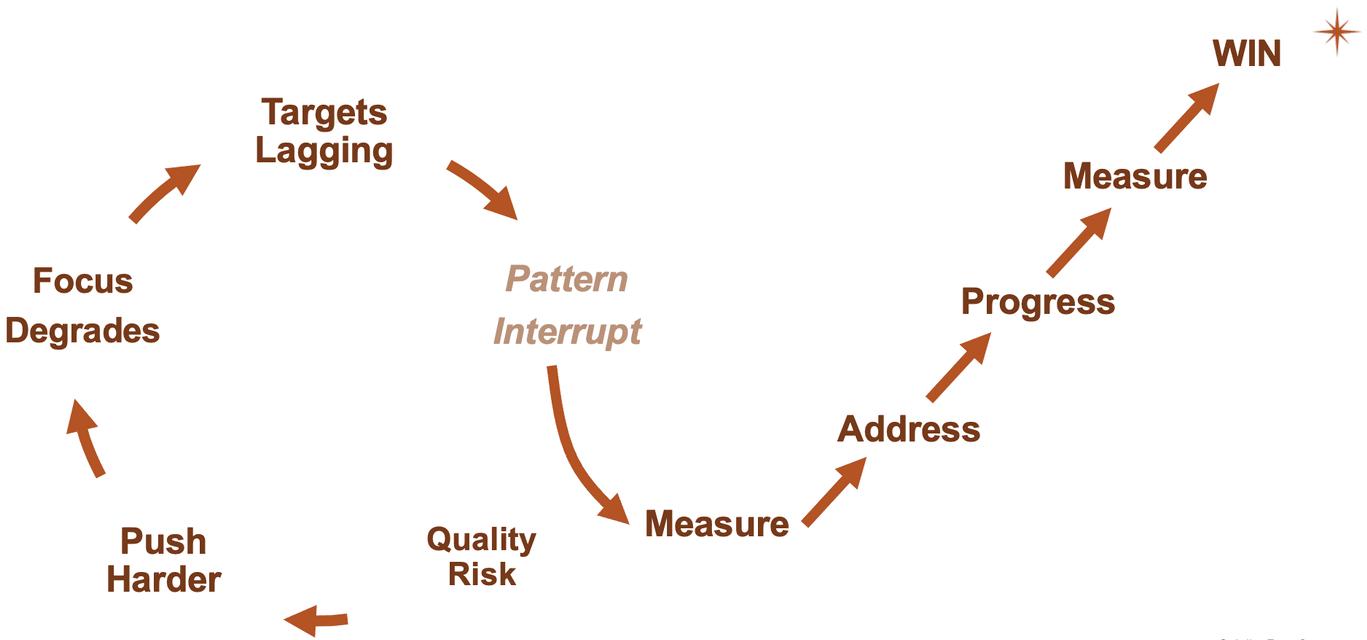
Work with your senior teams to recalibrate. You don’t just need to identify what to pursue, but how to pursue it. Are your rhythms driving high-value outcomes, or just generating busywork? Are you modeling clarity and focus at the top, or unintentionally reinforcing the chaos? By starting with executive leadership, those questions begin to get answered.
Then begin auditing calendars, initiatives, and workflows. As you identify redundancy and misaligned efforts, you can start to remove them. This isn’t about lowering standards. It’s about removing drag so your people can deliver with greater velocity and fewer false starts.
Once your teams are empowered with more bandwidth, they can be taught a myriad of critical “desk-skills” that drive high performance. Delegation frameworks, meeting discipline, or calendar instruction, will equip your people to operate with more precision and intention. Without those capabilities in place, the wheel just restarts under a new name and a new fire drill.
And then, of course, you must measure again and again. Check direction, track progress, and ensure that the gains you’ve made aren’t just a temporary lift but a structural improvement.
This entire process peaks with what we call the Slingshot of Success. It’s not about taking your foot off the gas, it’s about taking your foot off the wrong gas pedal and stepping on the right one. You’ll pull out of the centripetal force and gain visibility, reestablish control, and then launch forward with alignment and clarity.
We’ve watched organisations reclaim hours, reenergize teams, and execute more effectively. Not by doing more, but by doing what matters and doing it better.
If even one part of this cycle sounds familiar, maybe it’s time to step off the wheel. We’d be glad to show you how.
This was also published on Juliet Funt’s LinkedIn.
Juliet Funt is the founder and CEO at JFG (Juliet Funt Group), which is a consulting and training firm built upon the popular teaching of CEO Juliet Funt, author of A Minute to Think.

BY DR. SIEW FANG LAW,HANNES VAN RENSBURG

Your shadow leads, even when you don’t see it
As senior leaders, you carry the weight of decisions that shape lives and organisations. But have you ever paused to consider the unseen parts of yourself that influence your leadership?
We are talking about your leadership shadow—the hidden drivers, fears, and patterns that lurk beneath your actions. As authors of a book on leadership and a culture of care, we have seen how embracing this shadow transforms leaders from the inside out. Let’s explore what the leadership shadow is, how it differs from your personal shadow, and five heartfelt ways to understand it. This journey is not about shame; it is about compassion, growth, and leading with soul.
The leader’s shadow (mindsets, behaviour, values, decisions) feeds into the broader leadership shadow (organisational climate and influence). Both relate to the ethical footprint a leader leaves—what they permit, promote or ignore. The leadership shadow is the organisational reflection of the leader’s shadow—what is inside the leader gets cast outward and embedded in teams and systems.
For example, your personal fear of failure (leader’s shadow) might show up as micromanaging (leadership shadow), eroding trust. Both shadows matter, but your leadership shadow directly shapes your organisational impact.
Recognising both is vital for self-awareness, responsible leadership and cultural change.
Here are four ways to understand these shadows empathetically:
The first step is seeing your shadow clearly. Pause and reflect on moments when you have reacted in ways that do not align with your values—perhaps dismissing important feedback or pushing too aggressively for results. Ask, “What triggered me?” We have found journaling these moments helps. For instance, I once snapped at a team member during a stressful deadline, only to realise my shadow was fear of looking incompetent. Naming this freed me to lead with clarity. Awareness invites you to own your shadow without judgement, setting the stage for growth.
Your leadership shadow often stems from disconnection from your authentic self. Reconnect with your values, purpose, and inner calm. Try journaling, asking, “What is one thing I can do today to reconnect with my higher purpose?” Rather than wait to another day, align your actions with heart, letting your shadow inform rather than control you to gentle return to embrace your authentic self.
Set the intention to build a loving and reciprocal relationship with your essence by understanding the roots and patterns of your shadow. Your shadow is fearful part of yourself that often shows up as ego. Ego is like a mask that’s job is to protect and shield you from pain—like fear of failure or rejection. Recognise how it shows up: do you avoid tough conversations, overwork to prove worth, or dominate discussions? Trace these patterns to their roots. Recognising these will provide some of the most meaningful developmental experiences a leader can ask for.
Find your equilibrium. You were doing your best even when your shadow may have been ignored or dismissed. You cannot change your past. You can shape your future. Account and forgive yourself for the past missteps and promise to learn and grow as a way forward to re-balance. This act of self-compassion heals old wounds. This is a courageous and powerful process to recognise and forgive your shadow. It paves the way for authentic leadership.
Your shadow is not your enemy—it is your teacher. Rather than blaming the others and circumstances for causing you pain, express gratitude for these experiences in your growth. This shifts your perspective, turning shadow moments into leaning opportunities. Gratitude transforms your leadership, fostering resilience and empathy that inspire others.

Understanding your leadership shadow is like shining a light into a dark corner—it reveals what is driving you and how it affects others. By discovering and owning your hidden drivers, you model vulnerability, building trust and psychological safety. Your shadow work also deepens empathy, helping you navigate complex challenges with care. Most importantly, it connects you to your purpose, making leadership an authentic act, not a performance.
Finally, to begin your journey, ask yourself:
In what ways might my leadership be unintentionally contributing to a culture of fear, exclusion, or complacency — and what internal shifts are needed to change that?
What unresolved experiences from my past (personal or professional) might still be influencing how I lead or relate to others today?
What part of myself do I project onto others (e.g., labelling someone as “too emotional,” “too ambitious,” “lazy”)? Could this be something I have not accepted in myself? 3 4 2
DR. SIEW FANG LAW
Dr. Siew Fang Law is a co-author of The Power of Care, a social psychologist, and an expert in peace psychology. She also champions a movement of care, offering practical tools and insights to transform lives and create a more compassionate world.
HANNES VAN RENSBURG
Hannes van Rensburg is a co-author of The Power of Care, a leadership coach, and a former senior executive. He also champions a movement of care, offering practical tools and insights to transform lives and create a more compassionate world.

BY NICOLA MORAS

Successful leadership these days is more about influence than dictatorship. You can’t cajole or push your people into producing for you. Ruling with the iron fist is counterintuitive – although tempting at times.
Do you remember your favourite manager or boss from early on in your career? The people who you recall with fondness and likely with a smile on your face? There was something about them as a human that makes you feel like that. It likely wasn’t about how they led, it was more about how they made you feel. Rockstars make us feel a certain way. That’s why we love them.
Leadership isn’t for the faint of heart. To make an impact whether you run a team or a business, you need more than a to-do list. You need guts, grit and a hit of energy. Your favourite manager probably had this as well as some personality.
As a leader, you can use your influence to create strong employee engagement, which is something we know produces better results within businesses. People who are engaged are more creative and drive better results.
So, what do we do? Given that Gallup found that leaders influence 70% of employee engagement, so you have a huge opportunity to tap into influence as a leadership tool. We want to use everything in our power to positively influence our people. You can do that, by tapping into your own style so you can lead like a rockstar.

Influential leaders don’t follow outdated rules just because “that’s how it’s always been done.” They challenge the status quo by leading with alignment, energy, and authenticity. The most impactful leaders rewrite the rules to create workplaces where people want to show up and give their best.

Leaders who are self-aware and authentic build stronger and more connected teams. Research consistently shows that when leaders lead from a place of clarity and personal alignment, they inspire greater trust, engagement, and performance.
Yet many still try to lead in ways that don’t quite fit. They copy others, second guess themselves and hold back parts of who they are. The truth is, leadership isn’t onesize-fits-all. Your strength lies in your uniqueness, and the more you own it, the more effective you become. Authentic leaders also drive results. It’s inspiring and it’s strategic.

Leadership isn’t about barking orders. It’s about building rapport and relationships. Get curious about what makes them tick and share as much as you can about yourself as well. Show your people that you’re interested in understanding them.
When you connect and communicate with your people, you create rapport and trust. This will help you become more influential.

How you feel and how you show up will impact all around you. Energetic and emotionally intelligent leaders drive higher team performance and loyalty. We know that people follow leaders who bring the firepassion, presence, and purpose.
Consider how you can tap more into the three P’s within yourself and notice how when you do this, the people you’re leading will shift.

If you want to make a profound impact, you’ve got to be seen. People remember how you made them feel and that starts with showing up with energy, conviction, and consistency.
This doesn’t mean wearing outlandish shirts to work! This means contributing your views thoughtfully about things as they come up. It means developing your own thinking about issues that you know will arise and speaking into those. When you do this, you build trust, influence and momentum.

Rockstars don’t wait for permission to lead change, they initiate it. You can, too. Businesses always need innovation and creative thinking in order to grow and evolve. It’s the way that businesses survive. Turn up the volume on your creativity and you’ll influence those around you to do the same.

Nicola Moras is the author of Visible and Into The Spotlight, a mentor and speaker who empowers leaders to create bold, unstoppable success and own their impact. Ready to lead boldly?
Consistency builds trust and momentum. The people you lead won’t remember what you said if you only say it once. They’ll remember what you reinforce consistently with energy, purpose and conviction.
BY LISA THOMAS

Middle managers aren’t just intermediaries in the innovation process but key drivers of implementation success.
In the innovation process, middle managers occupy a unique position that innovation leaders often overlook. While senior leadership might champion initiatives and frontline employees generate ideas, middle managers are the essential bridge that turns those ideas into reality.
Research shows middle managers play a pivotal role in translating adoption decisions into on-theground implementation, yet their influence often goes unrecognised. We’ve observed that successful innovation implementation heavily depends on how effectively middle managers are engaged in the process.

Here are six specific ways middle managers impact your innovation success and practical strategies to leverage their position.
Middle managers serve as information conduits between senior leadership and frontline staff. They determine which innovative ideas move upward and how strategic directives flow downward. This gatekeeping function means they can either amplify promising innovations or create bottlenecks.
Research from Harvard Business Review reveals that middle managers often span organisational boundaries, making them particularly effective at bridging informational gaps during implementation.
While some filtering is necessary to prevent overwhelming senior leaders, too much restricts the flow of potentially valuable ideas.
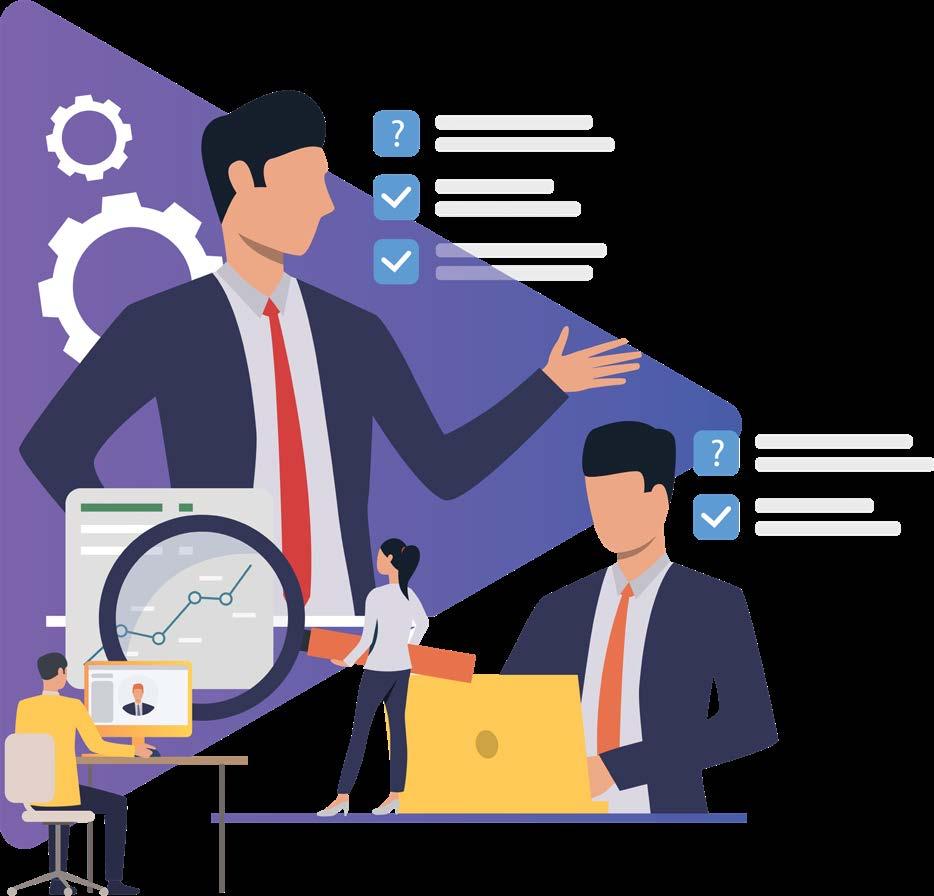
Create additional communication channels that complement middle managers’ roles without replacing them. Implement regular cross-functional innovation meetings where frontline staff can directly present ideas to innovation teams with their managers present. This preserves the manager’s role while preventing single-point bottlenecks.
2
Strategic initiatives often fail in the implementation phase because they remain too abstract. Middle managers possess the unique ability to translate highlevel innovation strategy into concrete operational steps.
When middle managers effectively synthesise information about innovation implementation, they create a climate where innovation is perceived as rewarded, supported, and expected. Their translation work helps employees understand how innovations relate to their specific roles.
Equip middle managers with implementation toolkits tailored to their departments. These should include clear guidelines on resource allocation, expected timelines, and specific ways to measure progress.
Avoid generic directives like “implement this by Q3” and instead provide structured frameworks for breaking down implementation into manageable tasks.
Middle managers control departmental resources and determine daily priorities. Their decisions about time allocation, staff assignments, and budget usage directly impact whether innovations receive the resources needed to succeed.
Studies in healthcare organisations show that middle managers actively “diffuse information, synthesise information, mediate between strategy and day-to-day activities, and sell innovation implementation” when they’re properly engaged in the process.
Integrate innovation implementation metrics into middle managers’ performance evaluations. This ensures innovation doesn’t become a “nice-to-have” that gets deprioritised when competing demands arise. Additionally, consider innovation-specific budget allocations that middle managers control but must use exclusively for implementation activities.
4 3
Middle managers establish the day-to-day work climate that either nurtures or stifles innovation. Their attitudes toward new initiatives directly influence how their teams respond.
Research from HYPE Innovation confirms that even with strong top management support, middle managers can make or break implementation through their behaviours and messaging. Their enthusiasm or scepticism becomes contagious among their teams.
Create a “middle manager innovation council” with representatives from different departments. This group should meet monthly to share implementation challenges and successes, creating positive peer pressure and a support network for innovation champions. Recognise and reward managers who successfully cultivate innovation-friendly team climates.
Middle managers have invaluable ground-level perspectives on what will and won’t work in practice. They can identify potential implementation obstacles before they become major roadblocks.
Studies published in Implementation Science show that middle managers can significantly contribute to implementation effectiveness by conveying vital information to appropriate employees throughout the organisation. Their practical knowledge is a reality check on overly ambitious or unrealistic innovation plans.

Involve middle managers early in the innovation process through structured feedback mechanisms. Before finalising implementation plans, conduct “feasibility workshops” where middle managers can identify potential barriers and suggest modifications. This improves plans and creates ownership among those responsible for execution.
Middle managers play a vital role in developing their teams’ innovation implementation capabilities through coaching, training, and feedback.
Research indicates that successful innovation often depends on middle managers’ ability to help their teams develop new skills necessary for implementation. Their day-to-day coaching shapes innovation capabilities more effectively than occasional formal training programs.
Develop an “Innovation Implementation Coach” certification program specifically for middle managers. This structured training should provide tools for coaching teams through common implementation challenges, facilitating productive innovation discussions, and building innovation capabilities through daily work activities.
Middle managers aren’t just intermediaries in the innovation process but key drivers of implementation success. Innovation leaders can dramatically improve their success rates by understanding and enhancing their role in these six areas.
Remember that middle managers face challenges: They must lead change, implement change, and often change their behaviour simultaneously. Supporting them with clear expectations, proper resources, and recognition of their critical role transforms them from potential innovation bottlenecks into powerful implementation engines.
For sustainable innovation success, invest as much in engaging your middle managers as you do in generating ideas or securing executive sponsorship. When adequately engaged, they become the vital link that turns promising concepts into successful realities.
LISA
To learn more about establishing a successful innovation management process from ideation through implementation, check out InnovationCast’s comprehensive guide to the steps from idea to implementation.


BY WILLIAM ARRUDA

In a world increasingly driven by artificial intelligence, how we interact with technology may seem trivial— until you consider the cost. According to OpenAI CEO Sam Altman in a post on X, common courtesies like saying “please” and “thank you” in prompts have cost the company a considerable amount of money. These pleasantries, while seemingly benign, take extra processing power, increasing electricity use and, ultimately, expense. But what if those extra words aren’t just fluff? What if, instead of being wasteful, those small, human gestures are actually the key to working effectively with AI?
AI tools like ChatGPT, Gemini, and Claude process massive volumes of information with every user interaction. Because large language models (LLMs) run on server farms that consume vast amounts of energy, every additional word counts toward compute time and energy consumption. Altman’s comment–discounting your mother’s sage advice–was an honest observation of actual costs. But it sparked an important conversation about how we interact with AI, and whether politeness should be sacrificed in the name of efficiency.
While it’s true that being polite adds characters to a prompt and might increase energy consumption, the benefits of those extra words outweigh the costs— especially when you consider the quality of the results. Here’s why.
Many people approach AI like they’re searching in Google: enter a few keywords, hit enter, and hope for a useful output. But generative AI isn’t a search engine. It’s a partner in problem-solving. And like any partner, the quality of your interaction matters.
One of the most overlooked best practices when using AI tools is to treat AI like a person. Thats one of 17 simple AI best practices that make AI interactions more meaningful. Approaching AI like a human interaction doesn’t mean attributing emotions or consciousness to your chatbot, but rather engaging in a thoughtful, respectful conversation. Just like you wouldn’t bark vague instructions at an intern or colleague and expect stellar results, you shouldn’t expect great responses from AI when you treat it like a search engine.
Approach AI like a collaborative partner and you’ll be more likely to include phrases like “please write this in a more conversational tone” or “thank you, that was helpful—now can you reframe it for a younger, more tech-savvy audience?” These courtesies naturally extend from a more human-centered approach to interacting with technology. And as it turns out, they often lead to significantly better outcomes.
When you engage in a conversational way, AI responds more precisely and thoroughly. That reduces the need for repeated prompting, rephrasing, and clarification— saving you time and improving overall efficiency.
In this context, politeness isn’t just about being nice. It’s a strategic choice that helps:
• Clarify your intent
• Make requests more specific
• Create continuity across follow-ups
• Yield higher-quality results
Rather than a drain on resources, this approach actually optimizes AI interactions, reducing the need for rework. Over time, that translates to faster outcomes and better results—making your AI interaction more energy-efficient, not less.

But there’s another angle to this: how it makes us feel. Our brains are wired for social interaction. Even when we know we’re speaking to a machine, our default behaviors kick in. We’re more comfortable, more open, and often more articulate when we engage respectfully—even if our conversation partner is made of silicon and copper instead of flesh and bones.
According to a December 2024 study by Future, the media company behind TechRadar, about 67% of U.S. AI users report being polite to AI tools. In the UK, the number is slightly higher at 71%. Interestingly, 12% of respondents admitted that they are polite to AI out of fear. They worry that rudeness might come back to haunt them if AI systems ever become more autonomous (that’s a topic for a future article).
While that fear might seem like science fiction, it underscores how deeply we internalize the rules of human interaction—even when we know the entity we’re engaging with isn’t human. That instinctive response might actually be working in our favor. And it comes with one added benefit. Your interaction with AI tools will likely increase over time. If you don’t extend these to your AI partner, that lack of politesse could rub off on your interactions with your human partners, and no one wants to live in a world without that type of civility.
The shift from one-way commands to two-way collaboration is one of the most important evolutions in human-computer interaction. Treating AI as a partner, not a tool, is not just more productive— it’s more aligned with the reality of the way these platforms are designed to work. They’re trained on human conversation, after all. They’re built to engage in nuance, context, and dialogue. When we embrace that reality, stop reducing our prompts to search terms, and start treating them like conversations, we can maximize the power of generative AI.
When we were all thrown into remote work and endless online meetings during Covid, companies didn’t have time to teach employees how to make the most of these digital interactions. As a result, many people never learned the skills or adopted the mindsets necessary to engage effectively in virtual interactions. For organisations embracing AI, the takeaway is clear: teach your teams how to talk to AI like they would to a trusted teammate. Encourage full sentences.
Promote clarity and tone. Reward curiosity. And importantly, support a little old-fashioned politeness. Doing so not only improves outcomes, it builds a culture of thoughtful communication—something that can ripple across the organisation beyond just your AI use. The communication skills that are essential today have evolved, and being able to communicate with AI is a critical one. By training teams AI best practices, companies will help them think more clearly about what they’re asking for, which can lead to better strategy, clearer project scope, and faster execution.
Yes, saying “please” and “thank you” to AI may increase operational costs, but the return on that investment is real. Higher-quality responses, faster turnaround, and a more enjoyable interaction are just the start. The real win is in how it helps us become better communicators, clearer thinkers, and more effective problem solvers. The next time you type a prompt, don’t worry if it’s a little long. Add the context. Set the tone. Say “please” when you ask. Say “thank you” when you’re done, because in the age of AI, good manners aren’t just polite—they’re productive.
WILLIAM ARRUDA
William Arruda is the bestselling author of the definitive books on personal branding: Digital YOU, Career Distinction and Ditch. Dare. Do! And he’s the creative energy behind Reach Personal Branding and CareerBlast.TV – two groundbreaking organizations committed to expanding the visibility, availability, and value of personal branding across the globe.

12 June 2025 | Semenggoh Wildlife Centre
KUCHING: Corporate Social Responsibility (CSR) remains a crucial driver for environmental conservation, fostering meaningful cross-agency partnerships to strengthen a more dynamic and sustainable public service ecosystem.
The chief executive officer of the Sarawak Public Service Leadership Institute (LI), Datu Dr Azhar Ahmad, said the joint initiative between LI, the Sarawak Forestry Corporation (SFC) and the Sarawak Wildlife Centre was a commendable step towards creating a lasting impact for both communities and the environment.
“We believe that through collective effort, we can advance initiatives that deliver real change, aligned with the inclusive vision championed by the Premier of Sarawak, Datuk Patinggi Tan Sri Abang Johari Tun Openg, and ensure that this message resonates with all levels of society,” he said during the CSR programme at the Semenggoh Nature Reserve today.
Azhar explained that the programme not only promoted environmental awareness but also offered valuable exposure to the principles of CSR, while opening new opportunities for cross-agency collaboration.
“I truly appreciate the dedication of everyone involved, which enabled us to generate lasting, meaningful impact, especially in our commitment to preserving the environment.
“This contribution inspires us to protect the natural world and nurture our love for the land of the Hornbill,” he said.
He noted that this approach supports the aspirations of the Post-COVID-19 Development Strategy 2030 (PCDS 2030), as the Sarawak Civil Service (SCS) increasingly recognises the need to go beyond the basics in addressing the complex, interconnected challenges of today’s economic, social, and environmental landscape.
“This approach not only enhances public service effectiveness but also supports sustainable development goals by addressing urgent issues such as wildlife conservation and climate resilience,” he added.
Dr Azhar emphasised that teamwork and collaboration are the core drivers of progress, enabling shared visions to flourish through mutual effort, an emphasis echoed by Sarawak State Secretary and LI Chairman, Datuk Amar Mohamad Abu Bakar Marzuki.
“Knowledge-sharing not only empowers individuals but also strengthens collective efforts towards long-term, sustainable success.
“Together, we can shape a more impactful, dynamic public service capable of meeting the needs of a diverse society,” he said.
He also expressed hope to expand the CSR programme to other locations such as Bako National Park or Bario, should there be continued support and commitment from stakeholders.
The CSR programme included a range of environmental activities, such as gravel paving of footpaths, painting road shoulders, and planting fruit trees like durian and rambutan, intended to serve as a sustainable food source for the orangutans at Semenggoh.
During the event, Azhar also presented a souvenir to Sarawak Wildlife Centre Ranger, Muhammad Azizi Ahmad Zaini, took part in tree-planting activities, and joined fellow dignitaries for a commemorative group photo.
Visitors were also treated to a lively display of orangutans swinging gracefully among the trees, adding vibrancy to the day’s event.




KUCHING: Sarawak’s nation-building efforts must be rooted in the values of peace, harmony and compassion, not just in words but in real, consistent action, says Deputy Premier Datuk Amar Dr Sim Kui Hian.
He said that peace, harmony and compassion are concepts often discussed, but rarely put into practice in daily life.
“This topic is actually easy to talk about, but difficult to practice. I mean, a lot of people talk a lot, but to practice, right, is very challenging,” he added.
“And this topic is timely, because at this point of time, it’s very important as part of Sarawak nation building. We are building up Sarawak as a nation. And this is increasingly challenging.”
Dr Sim said this at the Kuching International Roundtable Forum on Peace, Harmony and Compassion 2025 held at Tun Abang Salahuddin Islamic Centre (PITAS), Universiti Malaysia Sarawak (UNIMAS) today.
He stressed that these values must be applied across all levels of society, from homes and schools to communities and leadership.
“Whether at home, in the community, at university, or in government, everyone has a role. At the political level, it’s about creating policies that reflect these values,” he said.
“At the university level, it’s not just about character building but nurturing values like appreciation for peace and harmony.”
He also noted the importance of harmony with nature, not just among people.
“Harmony is not only human-to-human. We need harmony with the environment as well,” he added.
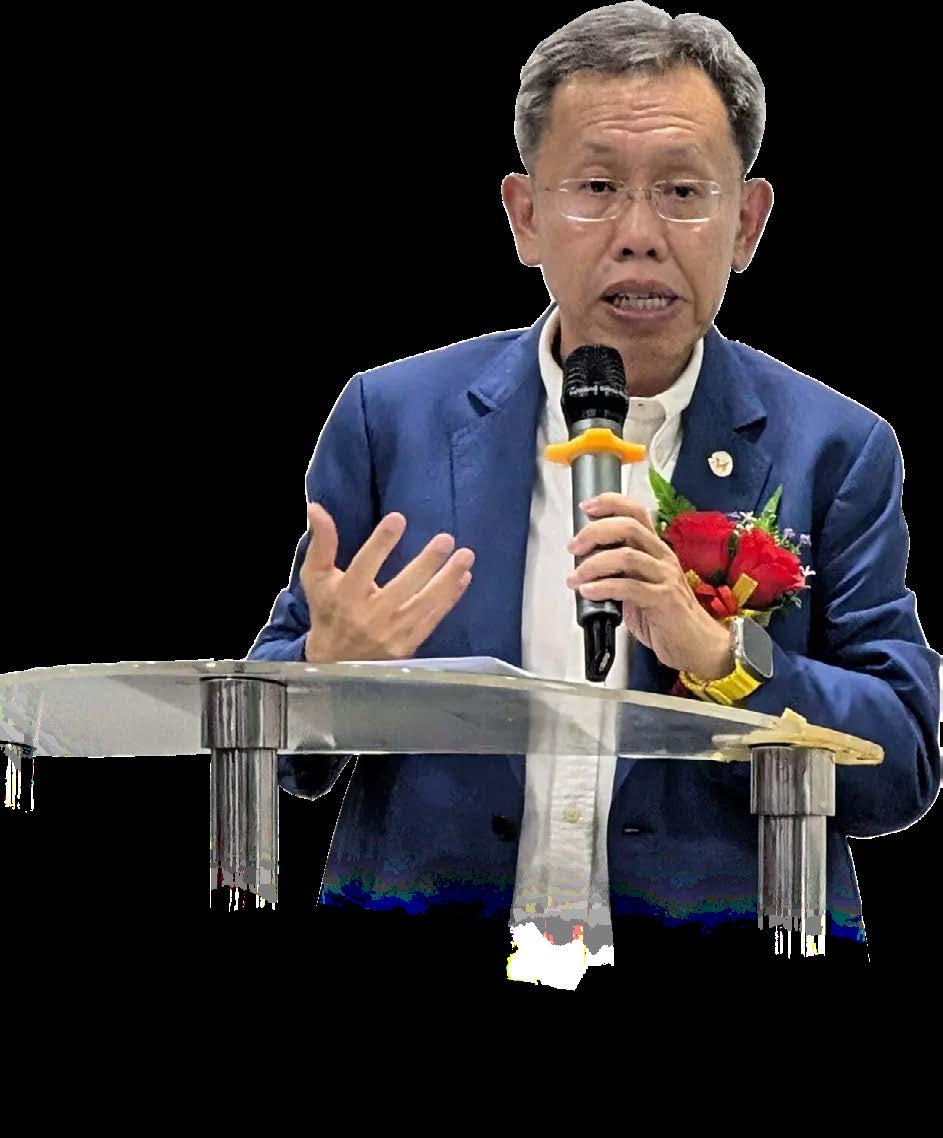
The Honourable Datuk Amar Dr. Sim Kui Hian Deputy Premier
Kuching International Roundtable Forum on Peace, Harmony and Compassion 2025
The forum, he said, serves as a meaningful platform to share perspectives, learn from one another and reflect on both what to do and what to avoid.
Coming together, he further said, is an important starting point.
“There’s no question that we share many similarities despite our differences. After all, our DNA is largely the same. If yours were too different, you wouldn’t be human,” he opined.
He also spoke about Sarawak’s transformation in recent years, noting that the state has earned new respect as it grows economically stronger.
“Five years ago, we were not rich. People used to look down on us. But now that Sarawak is rising, suddenly they want to call us brother and sister.
“So, we must now share our values, the values of unity, compassion and peace, as we continue building Sarawak’s future,” he added.
He also urged Sarawakians not to leave peace, harmony and compassion as mere ideals, but to live them out daily.
“It doesn’t happen overnight. It takes time, exchange, understanding, and most of all, courage. Each and every one of us must play our part. Practice matters more than theory,” Dr Sim stressed.
